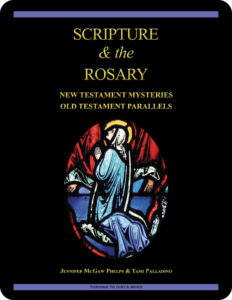slave
 Did the Blessed Virgin Mary consider herself to be God’s slave or to be God’s servant? As we approach the Advent season, we’re reminded of the Blessed Virgin’s famous statement: “Behold, I am the handmaid of the Lord. May it be done to me according to your word” from the Gospel According to Luke 1:38 (NABRE). This statement traditionally is called the fiat from the Latin word translated as “let it be done.” Mary’s fiat raises a number of interesting linguistic questions, but perhaps first among them is that of what it means to be the handmaid of the Lord.
Did the Blessed Virgin Mary consider herself to be God’s slave or to be God’s servant? As we approach the Advent season, we’re reminded of the Blessed Virgin’s famous statement: “Behold, I am the handmaid of the Lord. May it be done to me according to your word” from the Gospel According to Luke 1:38 (NABRE). This statement traditionally is called the fiat from the Latin word translated as “let it be done.” Mary’s fiat raises a number of interesting linguistic questions, but perhaps first among them is that of what it means to be the handmaid of the Lord.
Take a moment to consider what you think the word handmaid means in this context. Merriam-Webster defines handmaid as “a personal maid” or “female servant.” The Latin ancilla contains this meaning and the additional meaning of slave. The Greek word used is doulos, however, and its meaning is restrict to “slave.” The primary difference between a slave and a servant is that of compensation. Slaves are not paid. The other difference is one of choice. Slaves do not have the legal option of leaving, whereas a servant performing a job can quit.
This difference in meaning raises a question regarding how the Blessed Virgin Mary viewed her relationship with God—and so also how we should behave toward God. Is it perhaps a more comfortable idea for us to consider ourselves to be servants of God rather than to think of ourselves as God’s slaves? How is it that you seek to serve God?
related topics: parthenos; servant
you also may like our study of Scripture & the Rosary (digital only)
 Scripture & the Rosary: New Testament Mysteries, Old Testament Parallels, a 26-lesson Catholic Bible study with an imprimatur, looks at the biblical foundations of the Rosary. The study includes lessons on Pope St. John Paul II’s Rosarium Virginis Mariae (Rosary of the Virgin Mary), the Apostles’ Creed, and the Luminous Mysteries as well as the original 15 Mysteries of the Rosary. Color photographs of stained glass windows depict key scenes in the lives of Jesus and Mary. Free digital lessons rotate throughout the year on our website.
Scripture & the Rosary: New Testament Mysteries, Old Testament Parallels, a 26-lesson Catholic Bible study with an imprimatur, looks at the biblical foundations of the Rosary. The study includes lessons on Pope St. John Paul II’s Rosarium Virginis Mariae (Rosary of the Virgin Mary), the Apostles’ Creed, and the Luminous Mysteries as well as the original 15 Mysteries of the Rosary. Color photographs of stained glass windows depict key scenes in the lives of Jesus and Mary. Free digital lessons rotate throughout the year on our website.
 Click on the picture of the statue of Moses with horns (above) to learn more about Lost in Translation. A new entry is archived each Monday. Contact us to receive Lost in Translation by email every week. You may use any of the contact links on our website to ask Matthew a question.
Click on the picture of the statue of Moses with horns (above) to learn more about Lost in Translation. A new entry is archived each Monday. Contact us to receive Lost in Translation by email every week. You may use any of the contact links on our website to ask Matthew a question.

Leave a Reply
You must be logged in to post a comment.